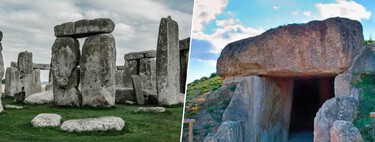What did our ancestors eat? It is a question that we have asked ourselves numerous times. Partly because the answer may vary depending on the geographical or temporal framework in which we find ourselves.
On the banks of the Danube. And sometimes researchers come across diets that they break their schemes. This is what happened a few years ago when a group of archaeologists from the University of Bristol analyzed archaeological remains from a Neolithic site in the Iron Gates gorge.
The site is located in the canyon formed by the Danube River along its border between Romania and Serbia, and between the Carpathians and the Balkans. This river environment was ideal for the life of societies for hunter-fisher-gatherer societies at the end of the Ice Age and beginning of the Holocene.
Less meat, more fish. However, the arrival of the Neolithic in Europe brought substantial changes in the way the inhabitants of the continent ate. This is where the results of the analyzes carried out on ceramic objects from the Neolithic bring with them a surprising finding: evidence that in this society the consumption of fish was maintained during the new era.
And the changes in diet associated with the advent of agriculture in Europe implied the abandonment of fishing and a greater consumption of meat and dairy products. Something logical if we take into account that the new practices also allowed the arrival of livestock farming.
The analysis. The team responsible for the discovery studied the organic residues that had survived the passage of time in the 8,000-year-old ceramic remains found at the site. Chemical analysis made it possible to determine that the containers had been used to cook, store or consume fish.
The analysis is based on the presence of stable carbon isotopes. These isotopes leave a “signature” that allows us to differentiate the origin of organic remains in the form of fatty acids. It is thus possible to determine whether the organic remains belonged to ruminant mammals, pigs, fish or dairy products.
Details of the work carried out by the team were published in an article in the magazine Royal Society Proceedings B.
Why didn’t they give themselves to meat? The analysis leaves an important doubt: why while in the rest of Europe the consumption of livestock products began to establish itself, in this place a diet more typical of the Mesolithic was maintained at a time when the trend was towards the consumption of products meat and dairy. There are two possible hypotheses that, according to the team, could explain this “loyalty” towards fishing.
The first hypothesis is that the inhabitants of this region remained a stronghold of Mesolithic culture, that is, that they still maintained the culture of hunter-gatherer societies, but that they possessed Neloitic ceramics thanks to contact with nearby groups. That is, it would not be so much an agrarian society with a pre-agrarian diet, but rather a pre-agrarian society with more “modern” artifacts.
The other hypothesis that the team proposed is that the group belonged to a Mesolithic society of farmers, but that upon arriving in the region they preferred to take advantage of the resources that the river offered them. Resources in the form of sturgeon: a type of fish present in the river that can reach large sizes and could provide enough nutrients to avoid having to resort to livestock as a food source.
In Xataka | If the question is “who first thought of eating seafood”, we already know the answer: Neanderthals.
Image | Iron Gate Gorge, Cornelius Bechtler / Mesolithic statue found in the area, Petar Milošević















![[Img #74020]](https://thelatestnews.world/wp-content/uploads/2024/10/Radon-in-homes-and-childhood-leukemia-300x200.jpg)
Add Comment